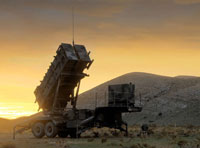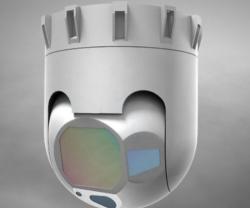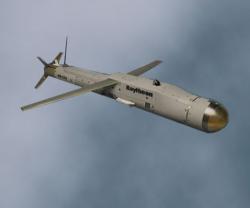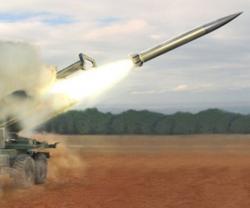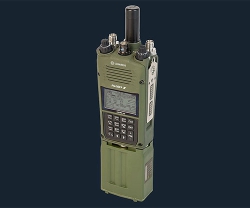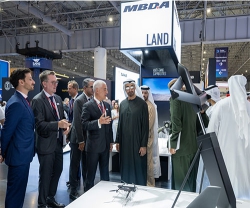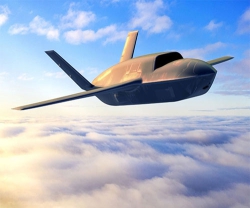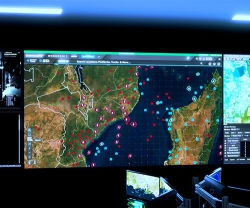Successful Integration Test for Raytheon’s JLENS-Patriot
02.05.2012 North America
Two Raytheon systems, the Joint Land Attack Cruise Missile Defense Elevated Netted Sensor System (JLENS) and the Patriot Air and Missile Defense System, demonstrated their ability to work together to detect, track and shoot down a test target simulating a hostile cruise missile during an exercise at the Utah Training and Test Range.
This test reinforces the ability of Raytheon systems to integrate in support of a comprehensive air and missile defense strategy involving multiple sensors and interceptors.
“When systems like JLENS, Patriot and others work together, the capability of our nation's air and missile defenses is significantly improved. In simple terms, our defenses are tighter and harder to penetrate, resulting in greater protection for warfighters, civilian populations, critical assets and infrastructure,” said David Gulla, Vice President of Global Integrated Sensors for Raytheon's Integrated Defense Systems business.
In addition to destroying the target drone, initial indications are that the JLENS-Patriot systems integration met test objectives. The JLENS surveillance system was evaluated on its capabilities to detect and track a long-range threat and then cue the fire control radar. In turn, the fire control system was evaluated on its ability to track and transmit target data to Patriot computers. All data from the exercise will be analyzed closely against test parameters.
JLENS is designed primarily to detect and track hostile cruise missiles; however, it is also capable of detecting and tracking low-flying aircraft and unmanned aerial systems. JLENS also incorporates the capability to detect and track ballistic missiles, large caliber rockets and surface targets on land and sea.
A JLENS system, referred to as an orbit, consists of 2 tethered 74-meter aerostats with radar and communications systems incorporated on each. The aerostats elevate the radar and communications systems to 10,000 feet. The surveillance radar provides 360-degree coverage and the fire control radar provides sectored precision tracking for hundreds of miles over land and sea.
The Patriot Air and Missile Defense System, the other major player in the integrated fire control exercise, is combat-proven and a key component in the air and missile defenses of 12 nations. Patriot is effective against a full range of advanced threats, including enemy aircraft; tactical ballistic missiles; cruise missiles, as demonstrated in this exercise; and unmanned aerial systems.
Raytheon is the prime contractor for JLENS and domestic and international Patriot systems, as well as systems integrator for Patriot Advanced Capability-3 missiles.
This test reinforces the ability of Raytheon systems to integrate in support of a comprehensive air and missile defense strategy involving multiple sensors and interceptors.
“When systems like JLENS, Patriot and others work together, the capability of our nation's air and missile defenses is significantly improved. In simple terms, our defenses are tighter and harder to penetrate, resulting in greater protection for warfighters, civilian populations, critical assets and infrastructure,” said David Gulla, Vice President of Global Integrated Sensors for Raytheon's Integrated Defense Systems business.
In addition to destroying the target drone, initial indications are that the JLENS-Patriot systems integration met test objectives. The JLENS surveillance system was evaluated on its capabilities to detect and track a long-range threat and then cue the fire control radar. In turn, the fire control system was evaluated on its ability to track and transmit target data to Patriot computers. All data from the exercise will be analyzed closely against test parameters.
JLENS is designed primarily to detect and track hostile cruise missiles; however, it is also capable of detecting and tracking low-flying aircraft and unmanned aerial systems. JLENS also incorporates the capability to detect and track ballistic missiles, large caliber rockets and surface targets on land and sea.
A JLENS system, referred to as an orbit, consists of 2 tethered 74-meter aerostats with radar and communications systems incorporated on each. The aerostats elevate the radar and communications systems to 10,000 feet. The surveillance radar provides 360-degree coverage and the fire control radar provides sectored precision tracking for hundreds of miles over land and sea.
The Patriot Air and Missile Defense System, the other major player in the integrated fire control exercise, is combat-proven and a key component in the air and missile defenses of 12 nations. Patriot is effective against a full range of advanced threats, including enemy aircraft; tactical ballistic missiles; cruise missiles, as demonstrated in this exercise; and unmanned aerial systems.
Raytheon is the prime contractor for JLENS and domestic and international Patriot systems, as well as systems integrator for Patriot Advanced Capability-3 missiles.
Previous PostATK Wins Small Caliber Ammunition Orders
Latest news
Latest events
Dubai Airshow
17 - 21 Nov 2025Dubai World Central (DWC) - United Arab EmiratesEgypt Defence Expo (EDEX)
01 - 04 Dec 2025Egypt International Exhibition Center New Cairo - EgyptDoha International Maritime Defence Exhibition & Conference (DIMDEX 2026)
19 - 22 Jan 2026Doha - QatarUMEX – SimTEX
20 - 22 Jan 2026ADNEC Centre Abu Dhabi, - United Arab Emirates

